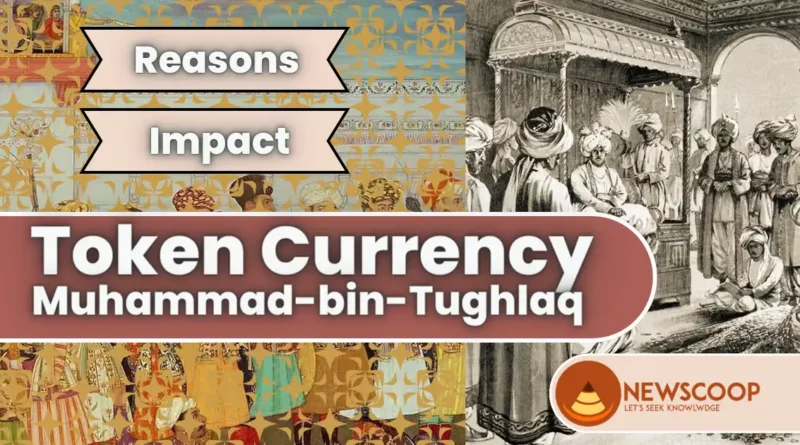The Experiment of Token Currency: Introduced by Muhammad-bin-Tughlaq
Muhammad Bin Tughlaq was a 14th-century sultan of the Delhi Sultanate in India known for his unconventional and often controversial policies. One of his most famous policies was the introduction of token currency, which aimed to counter the widespread problem of counterfeit coins in circulation and increase revenue for the state.
The implementation of this policy resulted in a dual currency system where both token currency and precious metal currency coexisted, leading to confusion and disruptions in trade and ultimately contributing to the decline of the economy during Tughlaq’s rule.
What is Token Currency?
Token currency was a monetary system introduced by Muhammad bin Tughlaq, a 14th-century Sultan of the Delhi Sultanate in India. It involved the use of copper or brass coins as a substitute for traditional gold and silver currency. The purpose was to address a shortage of precious metals, but the system faced challenges due to counterfeiting and public distrust, leading to its eventual abandonment.
Tughlaq ordered all existing gold and silver coins to be replaced by copper and lead tokens. This led to a dual currency system where both token currency and precious metal currency coexisted.
Reasons for the Introduction of Token Currency
There were two main reasons for the introduction of token currency:
- Counterfeit Coins: In the 14th century, there was a widespread problem of counterfeit coins in circulation in the Delhi Sultanate. Counterfeit coins posed a serious threat to the stability of the currency system and the economy. They reduced the value of the currency and made it difficult for people to trust the currency. To address this problem, Tughlaq introduced token currency as a solution.
- Increase Revenue: Tughlaq aimed to increase revenue for the state by increasing the amount of currency in circulation. He believed that by issuing more tokens, he could stimulate the economy and increase trade, which would result in increased revenue for the state. This was an ambitious attempt to boost the economy and increase the state’s resources.
Two Types of Tokens were Introduced
Muhammad bin Tughlaq introduced two types of tokens: copper tokens and lead tokens. Copper tokens were the more widely accepted form of token currency and were introduced to counter the problem of counterfeit coins. Lead tokens were also introduced but were not as successful or widely accepted.
1. Copper Tokens
Tughlaq introduced copper tokens as a form of currency. These tokens were not made of precious metal and hence were not valuable in themselves. They were small and lightweight, making them easy to carry and exchange. The primary advantage of copper tokens was that they were difficult to counterfeit, which was one of the reasons for their introduction.
2. Lead Tokens
Tughlaq also introduced lead tokens as a form of currency. However, they were not as widely accepted as copper tokens and were not as successful. Lead tokens were also not valuable in themselves and had the same disadvantage as copper tokens in that they were not made of precious metal.
Impact of Token Current
- Dual currency system: The introduction of token currency resulted in a dual currency system where both token and precious metal currency coexisted, leading to confusion and disruptions in trade.
- Misuse of token currency: Token currency was frequently misused and became almost worthless, leading to a shortage of currency and a decline in the economy.
- Hoarding of precious metal currency: People began to hoard precious metal currency, causing a shortage of currency and a decline in the economy.
- The decline in the economy: The decline in the economy was a direct result of the confusion caused by the dual currency system, the misuse of token currency, and the hoarding of precious metal currency.
- Failure of the policy: Ultimately, Tughlaq’s policy of introducing token currency was a failure and contributed to the decline of the economy during his rule.
Conclusion
Muhammad Bin Tughlaq’s introduction of token currency was an ambitious attempt to address the problem of counterfeit coins and increase revenue for the state. However, the consequences of this policy, such as disruptions in trade and a decline in the economy, outweighed the intended benefits.
Thank You!
Related Links:

